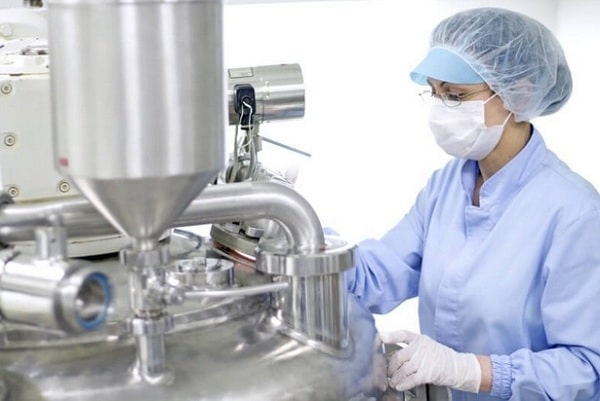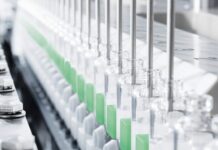How to use artificial intelligence to uncover hidden business value in the regulated pharmaceutical and biotech industries
Making AI usable for pharma and biotech industries
As pharmaceutical manufacturers optimize processes, they constantly strive to increase the output of a product while boosting their quality and reducing the share of errorprone manual processes at the same time. Here, AI will play a key role.
However, for manufacturing purposes only validated software systems may be used in the pharma industry. This means that any piece of software applied in this process needs to be tested to fulfill a strict set of predefined rules regarding its reliability and reproducibility. Such rules have not yet been fully established for AI systems, because their results are always subject to a certain degree of probability. How to deal with such uncertainties is currently a matter of discussion among experts of the pharma industry.
A starting point how validation of AI could be performed in the pharma context may be illustrated on the example of neural networks. Neural networks are mathematical rules that can be used to predict the future course of an ongoing process. They are trained and verified by com- paring them against historical data. To ensure the quality of a forecasting model, KPIs are defined and used to check the accuracy and reliability of the forecasts. If forecasts on the historical data match their actual observations, a neural network may be assumed validated and may be used in validated software.
Moreover, a validation concept for a complete system, that is used to control the process automatically, is currently under discussion on several levels. For example, the software experts of Körber Business Area Pharma have already brought up this issue within the EFG11, a group of inspectors who are experts specializing in computer validation. A special interest group has been formed at the GAMP D-A-CH Forum (part of ISPE) in order to develop a broad-based validation concept that would provide pharmaceutical and biotech companies with practical assistance and best practices.
Use case: Leveraging AI to optimize API yield in a chromatography process
Chromatography separates active pharmaceutical ingredients (API) from impurities. In this process, a liquid that contains the API and impurities flows through a so called chromatography column. During this process, higher concentrations of the API run through the column at certain times, while more of the impurities flow through at others.
To obtain as much as possible of the final product, the API collection needs to be optimized for maximum yield with impurities below certain predefined thresholds. Therefore an experienced employee initiates and terminates the API collection following certain rules established for the process. However, a human employee is not cap- able of hitting the theoretical optimum collection window, that can only be calculated after the process, when all the concentration curves are known.
This is where AI comes into play. With the help of neural networks the concentration curves can be predicted. From these curves the optimal initiation and finishing times of the collection can be calculated. The benefit of this approach is an up to three percent yield increase of the API. As long as these predictions are used as recommendations only – meant as a help or an information tool for the operator – the need for validation can currently be avoided until rules how to validate AI in pharmaceutical and biotech industries are established.
Similar methods can also be developed for decision- making processes in other production stages, thus trans- forming an entire industry sector.
Manufacturers should make sure their suppliers are familiar with their processes
Pharma and biotech manufacturers are currently being offered a broad range of software tools, all of which promise best performance. However, to achieve best performance, in-depth knowledge of the processes in a pharmaceutical factory is necessary to have for the developers of such software.
Although many suppliers offer tools, the development of software for the pharmaceutical industry is hampered by most of these companies lacking experience with relevant use cases.
Ideally, customers should choose a supplier who is familiar with the processes in pharmaceutical or biopharmaceutical production and knows from decades of experience what kinds of digital challenges these companies face.
Such a supplier shouldn’t just install another data plat- form in their customer’s factory, but instead offer out-of- the-box solutions that are tailored to the pharmaceutical industry – solutions that don’t require users to have extensive specialist expertise in order to obtain answers to the questions they currently face. Such software solutions don’t need to be extensively adapted in order to help auto- mate processes in a factory and make them more efficient.

In the future, factories could be places where AI optimizes every step of production as a matter of course. This could be just as commonplace as the use of robots in the operating room to help save lives.
Definitions
Artificial intelligence (AI) – aims to replicate human decision-making structures in a digital form. To do so, it processes very large amounts of data (big data). In its latest manifestation, AI uses neural networks and adaptive systems such as those employed in machine learning. AI is used to develop algorithms that will help find sophisticated data processing solutions in future pharmaceutical factories.
Machine learning – generates artificial knowledge from collected experiences. It enables IT systems to use existing data and algorithms to recognize patterns and rules and find solutions. To make this possible, people initially supply the systems with relevant data and algorithms and create rules for the analysis of this data and the recognition of patterns. On this basis, systems can use machine learning to find, extract, and combine relevant data, make forecasts, calculate probabilities, adapt to new developments, and optimize processes, for example.
Neural networks – like the biological models they’re based on, neural networks consist of multiple information-processing units known as neurons. Neurons are linked to one another and are very effective at recognizing patterns in images, sounds, languages, and mathematical structures. Units composed of multiple neurons transmit messages to one another. The strength of a connection between neurons is defined in terms of its weight. The higher this value is, the more influence one unit has on another. Every time this weight changes — by means of rules for learning, for example — the units learn something.
However, this only happens after the system has viewed a large number of examples. The networks then recognize what is important and relevant. Every new example provides the network with feed- back, causes the system to adjust its parameters, and creates the right filters for solutions. Neural networks can basically be used to process large amounts of data and recognize very complex relationships.
Software solutions that include AI are expected to help discover optimization potential, thus maximizing the yield or reducing production costs.
Artificial intelligence (AI) is already making a huge contribution to the global economy, even though this development is still in its early stages. AI is a kind of turbo drive for the new digital technologies, because it enables machines to imitate human decision-making processes.
Currently, AI is revolutionizing the healthcare system, where AI-based software is increasingly becoming a part of medical procedures. Robots are providing assistance during operations, while wearables are measuring every pulse beat and transmitting the data to doctors. Moreover, researchers are developing AI that can recognize cardiovascular and blood diseases. Already today, visual scans are used for remote medical screenings.
This development is also opening up great opportunities for pharmaceutical and biotech companies, because AI is useful not only for smart medical solutions but also for the phar- maceutical development and production. In the future, software solutions that include AI are expected to help discover and exploit optimization potential that is hidden today, thus maxi- mizing the yield of a pharmaceutical product or reducing production costs, for example.

We have you covered, always and everywhere
With local offices around the world we support you wherever your business is located.
Delivering the difference in pharma
We are Körber – an international technology group with about 10,000 employees, more than 100 locations worldwide and a common goal: We turn entrepreneurial thinking into customer success and shape the technological change. In the Business Areas Digital, Pharma, Supply Chain, Tissue and Tobacco, we offer products, solutions and services that inspire.
At the Körber Business Area Pharma we are delivering the difference along the pharma value chain with our unique portfolio of integrated solutions. With our software solutions we help drug manufacturers to digitize their pharma, biotech and cell & gene factories. The software product Werum PAS-X MES is recognized as the world’s leading Manufacturing Execution System for the pharma & biotech industry. Our data analytics and AI solutions accelerate product commercialization and uncover hidden business value.



















